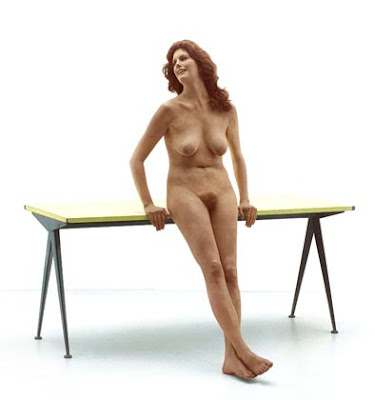Two photos by Joel-Peter Witkin
"I.D. Photograph from Purgatory: Two Women with Stomach Irritations" (1986, New Mexico) by Joel-Peter Witkin

"The Bra of Joan Miró" (1982, New Mexico) by Joel-Peter Witkin
Joel-Peter Witkin (1939, Brooklyn, New York City) is an American photographer.
Witkin claims that his vision and sensibility were initiated by an episode he witnessed when he was just a small child, a car accident that occurred in front of his house in which a little girl was decapitated. He also claims that the difficulties in his family were an influence for his work too. His favourite artist is Giotto, but the most obvious artistic influences on his work are Surrealism, particularly Max Ernst, and Baroque art. His photographic techniques draw on early Daguerreotypes and on the work of E. J. Bellocq.
His work often deals with such themes as death, corpses (or pieces of them) and various outsiders such as dwarves, transsexuals, hermaphrodites and physically deformed people. His complex tableaux often recall religious episodes or famous classical paintings. Because of the transgressive nature of the contents of his pictures, his works have been labeled exploitative and have sometimes shocked public opinion. His art was often marginalized because of this challenging aspect.
He employs a highly intuitive approach to the physical process of making the photograph, including scratching the negative, bleaching or toning the print, and an actual hands-in-the-chemicals printing technique. This experimentation began after seeing a 19th-century ambrotype of a woman and her ex-lover who had been scratched from the frame.
sources:




























